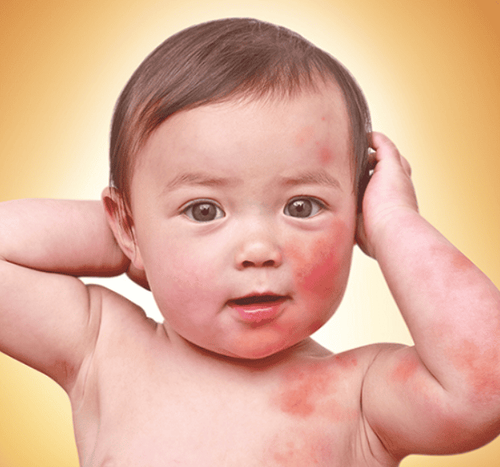This is an automatically translated article.
The article was consulted with Master, Doctor Do Nguyen Thuy Doan Trang - Cardiovascular Center - Vinmec Central Park International General Hospital.Kawasaki disease is a common disease in children under 5 years old, it is also the leading cause of acquired heart disease in children. With early detection and prompt treatment, most children can recover and have no problems.
1. Formation of Kawasaki disease
Kawasaki disease is caused by inflammation of the walls of small and medium sized arteries. The disease is named after a Japanese doctor, Kawasaki Tomisaku, who first discovered the disease in 1961. It mainly affects children, especially those under the age of 5. The inflammation tends to affect the coronary arteries, which supply blood to the heart. Kawasaki disease is also known as mucosal lymphadenopathy syndrome because it also affects the glands, skin, and mucous membranes inside the mouth, nose, and throat that become swollen during infection.Signs of Kawasaki disease are common such as high fever and peeling skin, it is treatable and most children recover from the illness and have no serious problems.

2. Causes of Kawasaki disease
The etiology of Kawasaki disease is unknown, but the epidemiology and clinical presentation suggest an infection or an abnormal immune response to an infection in children with pre-existing conditions. Autoimmune disease is also a possibility. It can also cause problems with the lymph nodes, skin, and lining of the mouth, nose, and throat.The disease is not contagious, although it sometimes occurs in community clusters. Children are more likely to contract the disease during winter and spring. However, they can also be contracted year-round.
Several risk factors may increase the likelihood of Kawasaki disease:
Age: Children under 5 years of age are most at risk of developing Kawasaki disease Gender: Boys are more likely to develop the disease. Ethnicity: Children of Asian or Pacific Islander descent, such as Japanese, Korean... have a higher incidence of Kawasaki disease.

3. Signs and symptoms of Kawasaki disease
Kawasaki disease is a difficult disease to diagnose because there is no specific test so it must rely on many symptoms. Kawasaki disease comes on quickly and symptoms develop in stages. Additionally, it can lead to heart problems for as little as 10 days to 2 weeks after symptoms begin. Signs and symptoms of the disease will have three stages as follows:Stage 1: Symptoms of this stage may include: fever higher than 39 degrees and lasting for more than three days; red eyes without thick discharge; rash on the main part of the body and genital areas; red, dry, cracked lips and red swollen tongue; red swollen skin on the palms and soles; swollen lymph nodes in the neck or some other location; irritable mood. Stage 2: In this stage, signs often occur such as: Peeling skin on the hands and feet, especially the fingertips and toes, often peeling in large patches; athritis ; diarrhea ; vomit; stomachache . Stage 3: In the third stage of the disease, signs and symptoms slowly disappear unless complications are present. If your child has a fever that lasts for more than three days, contact a doctor or if you have any of the following signs, you need to see a doctor right away for treatment, including:
Red both eyes Red swollen tongue Red palms or soles Peeling skin Rash Swollen lymph nodes Treating Kawasaki disease early can significantly reduce long-term effects.

5. Complications of Kawasaki disease
Kawasaki disease is the leading cause of acquired heart disease in children. However, with effective treatment, only a small number of children experience lasting damage.Some of the complications of the disease include:
Inflammation of the blood vessels, usually the coronary arteries, that supply blood to the heart Myocarditis Heart valve problems
Please dial HOTLINE for more information or register for an appointment HERE. Download MyVinmec app to make appointments faster and to manage your bookings easily.











